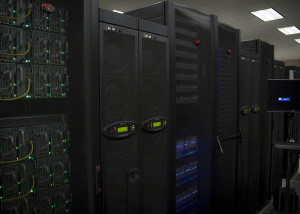
Niall Gaffney, Director of Data Intensive Computing, Texas Advanced Computing Center.
In this TACC Podcast, Jorge Salazar reports that scientists and engineers at the Texas Advanced Computing Center have created Wrangler, a new kind of supercomputer to handle Big Data.
“TACC’s Niall Gaffney led the effort to bring online a new kind of supercomputer, called Wrangler. Wrangler fills a gap in the supercomputing resources of XSEDE, the Extreme Science and Engineering Discovery Environment, supported by the National Science Foundation (NSF). Wrangler is the most powerful data analysis system allocated in XSEDE. The system is designed for large scale data transfer, analytics, and sharing and provides flexible support for a wide range of software stacks and workflows. Its scalable design allows for growth in the number of users and data applications.”
Dell Inc. and EMC are the two strategic partners providing the technology that make up the core of Wrangler. Wrangler uses EMC’s DSSD rack-scale flash technology to ensure speed and performance, enabling real-time analytics at scale.
Wrangler was designed to work closely with the Stampede supercomputer, the 10th most powerful in the world according to the bi-annual Top500 list, and the flagship of TACC at The University of Texas at Austin (UT Austin). Stampede has computed over six million jobs for open science since it came online in 2013.

Wrangler Supercomputer
We kept a lot of what was good with systems like Stampede,” said Gaffney, “but added new things to it like a very large flash storage system, a very large distributed spinning disc storage system, and high speed network access. This allows people who have data problems that weren’t being fulfilled by systems like Stampede and Lonestar to be able to do those in ways that they never could before.”
In this video, EMC describes how DSSD D5 meets demands of high-performance, data-intensive workloads. It provides ultra-dense, high-performance, highly available, and very low latency shared flash storage to up to 48 clients.
Download the MP3 * Read the Full Story * Sign up for our insideHPC Newsletter




